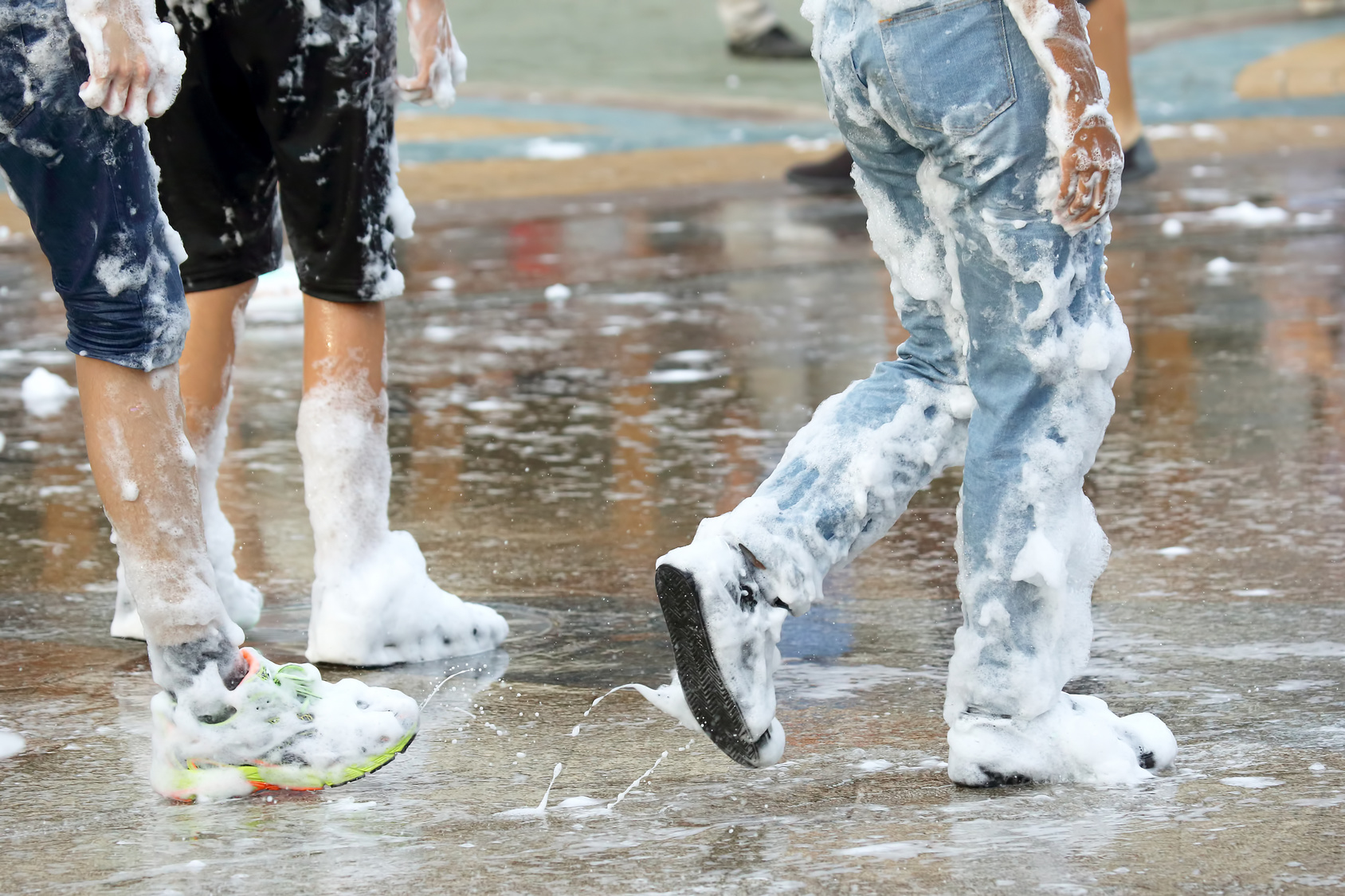Was the Bubble Trial Outrageous or Misunderstood?
In our previous blog, we talked about some questions to ask yourself before making the important decision to file a lawsuit. One of the perks of living in a democratic society is that we can attain justice where justice is due through our strong judicial system. Unfortunately, the drawback to this is that some people try to trick the system.
This turns into a cycle, where sometimes lawsuits sound frivolous when they’re actually legitimate. Every lawsuit is unique and can have unpredictable results. With that being said, you might actually have a case, even if it doesn’t seem clear-cut. Today, personal injury attorney, J. Price McNamara is here in Baton Rouge, LA to discuss another grey area personal injury case that might seem like a silly use of the judicial system.
The Bubble Trial
The Bubble Trial began in 2001 when a local trickster put gallons of dish soap into Duluth’s Fountain of Wind. It turned the fountain into an 8-foot-tall bubbly mess that oozed out onto the park sidewalks, making them a slippery hazard.
Shortly after the mess was made, a 57-year-old licensed and practicing nurse walked into the bubbles, slipped and fell. Upon falling, she suffered from lacerations on her leg. Due to her diabetic condition, the cut turned into a large gangrene infection. Kelly ended up needing multiple skin grafts and was in danger of losing her entire leg. Extensive measures were taken to save Kelly’s leg, which ended up leaving her with $43,000 worth of hospital bills.
Kelly contacted attorney Robert Boehigheimer about the incident, who was eager to take the case. In the beginning, the city offered $8,000 to settle the case without a trial, which wasn’t good enough for the plaintiff. A lot of people resented the case, saying that Kelly was just trying to steal money from the city. Since she allegedly walked into the bubbles, a lot of people believed she was scamming the taxpayers.
One
St. Louis County juror at the trial took Kelly’s side, saying: “This wasn’t just some made-up, trumped-up way to get money from the city. This woman was hurt. The more I examined the evidence, it was just clear to me. She wasn’t going into somebody’s yard. She wasn’t going someplace she shouldn’t be going. She was going to a tourist area. People shouldn’t have to be on guard when they are taking a step.”
The injury occurred on an early Saturday morning, hours after someone phoned a complaint to the city asking them to clean it up. Boedigheimer’s argument revolved around the fact that the city had time to clean the dangerous conditions or at least put a notice up, and they didn’t.
After deliberating for 9 hours in the courthouse, the jury eventually found the city 70% responsible, and Kelly 30% responsible for the injuries. A lot of people weren’t happy with the verdict because the city was self-insured. This meant they paid the settlements out of their own insurance fund, costing taxpayers a good deal of money. Do you think that Kelly's case was legitimate?
Why Kelly Won the Bubble Case
Personal injury cases are founded when someone gets hurt due to the negligence of someone else. Based on what we know about the city not cleaning up the mess, it’s clear that they were negligent. Kelly was walking through the Canal Park area, which is a known tourist area. It’s the parks department’s job to keep the parks maintained and safe for the public. In fact, that’s what the tax payer’s money goes towards.
If anything, people should’ve gotten upset that the city’s parks department weren't doing the job that they were paid with tax-payer money to do. Federal, state, and local governments have a
legal responsibility to keep the parks safe for bystanders by making repairs and cleaning up dangerous messes.
When you win a personal injury lawsuit, you’re typically reimbursed for your medical expenses, income, and emotional distress. Kelly was reimbursed for all three. After all, she nearly lost her leg and was out of work for months. A lot of the contenders of the Bubble case said that Kelly should’ve been held responsible for her injuries and not received such a steep compensation. Kelly made a total of $125, 060.86 from her lawsuit. This seems like a lot of money.
When you truly think about it, she didn’t make enough money. Her attorney got a third of this profit, which lowered her down to $83,373.91. Yeah, that’s still a lot of money, but that’s not all of the expenses that came out of her compensation.
She also had medical bills. After paying the $43,000 worth of medical bills that she incurred from the fall, she was down to $40, 373.91. This isn’t including other possible fees for court reporters and expert witnesses. In the end, she didn’t end up with a large profit from her lawsuit. With the amount of money that she lost from being out of work with the injury, she probably ended up breaking even.
In the end, the lawsuit paid her medical bills and maybe some of the work that she missed. Since it was the state’s fault for not cleaning up the mess that was called in, this was a reasonable compensation. Justice was served in the Kelly case, even though most people thought it was fraudulent. Luckily, the city of Duluth put a railing around the fountain. So, if you ever find yourself around the Fountain of Wind, you won't have to worry about slipping.
J. Price McNamara
Attorney
Losing my own brother, then my father and sister after long, disabling illnesses just a few months apart drove a career change for me. Before that experience, I never truly understood the place you’re in. I never understood the dramatic impact that receiving (or not receiving) the disability and life insurance benefits you paid for and counted on can have on your life especially when you need to focus on family and healing. What I experienced with my own family now drives the way I view my clients and my work, and I will never forget it!
Author's Bio



